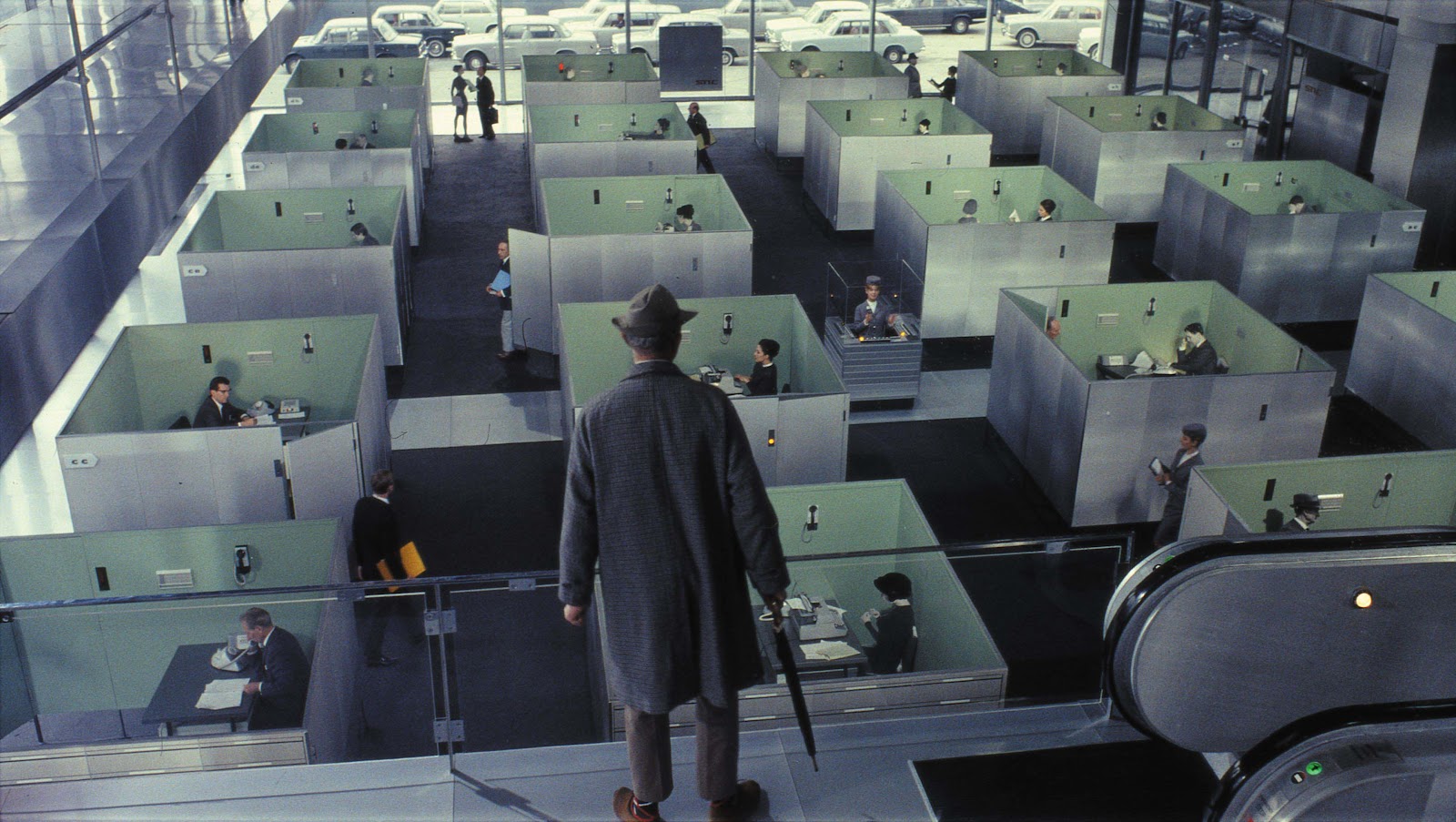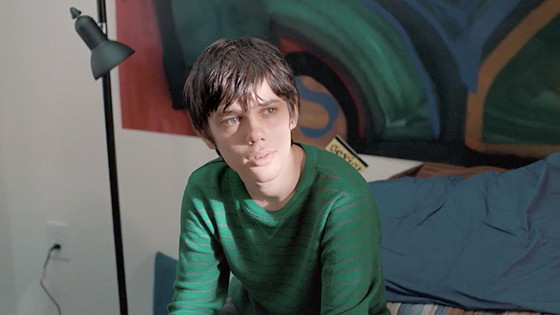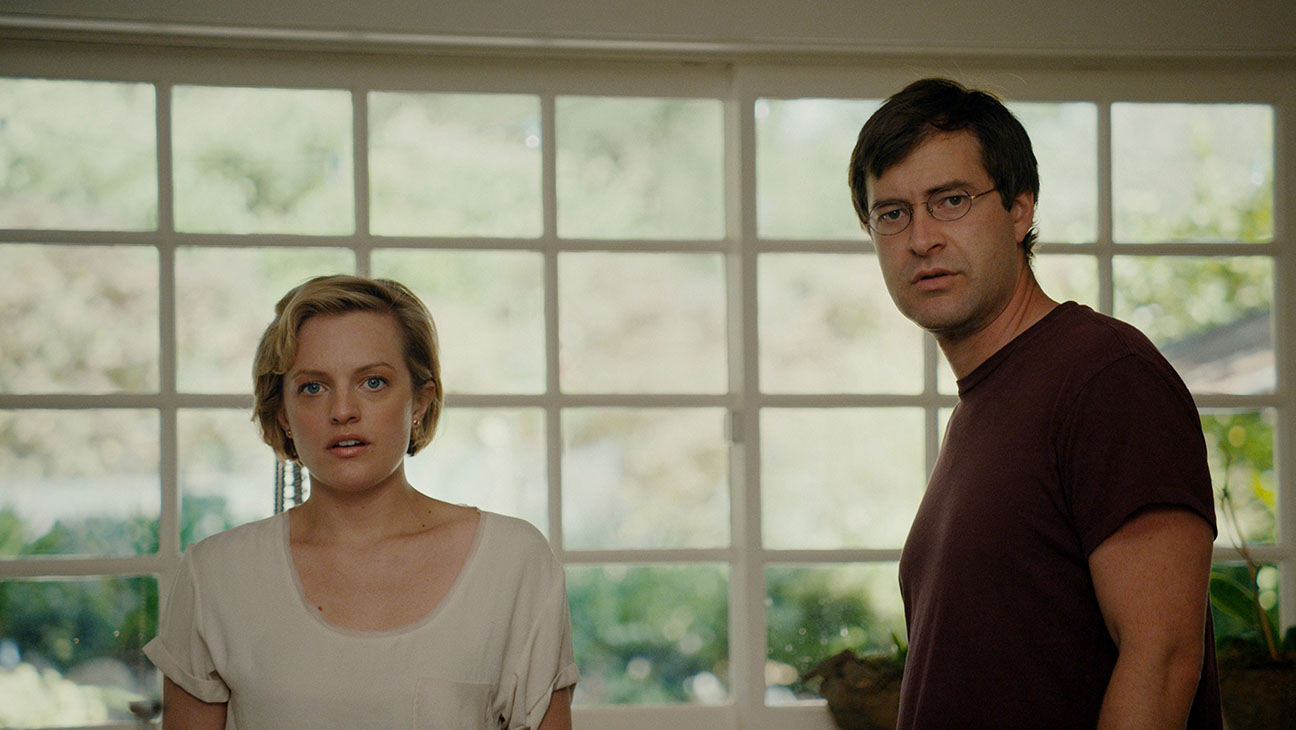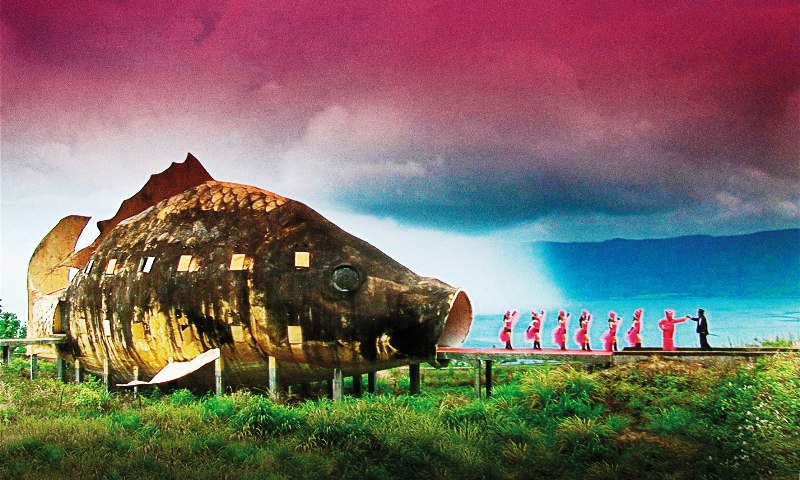6. Playtime (1967, Jacques Tati)

Whether Tati intended to make his most expensive movie a comedy or not, it’s clear that this film mocks modernization in a way that seems more serious than conventionally funny. When viewing Playtime decades later, one cannot deny that it provokes certain elements of a dystopia, following the lives of dull and seemingly manufactured human beings living in a Paris that has also been transformed into endless rows of tall, glass skyscrapers. In this version of Paris, all is grey, and the historical sites can only be seen through the reflections of the glass.
Although the film’s silence allows certain comedic subtleties to take the spotlight, Playtime is not anywhere near a conventional comedy. Its humour lies in giving the viewer a bird’s eye view of the strange interactions between people, and the awkwardness of coincidence.
Tati tests the genre of comedy by forcing the audience to laugh at life’s absurdity. It does not necessarily evoke a sense of comedic relief, but instead activates a reflective instinct to question the effects of technological progress on culture and humanity. Playtime is essentially a mockery of the corporate world, depicting it as a synchronized stage where all the lights turn off when the visitors leave.
One can refer to the film as a dark comedy when deconstructing the nature of its intention, however, Tati’s Playtime has a serious context, making it a game of thought provoking drama with elements of science fiction and surrealism.
7. Boyhood (2014, Richard Linklater)

What makes Boyhood a unique coming of age film is that the main characters in the film stay the same throughout the course of the film. In short, Boyhood took someone’s physical growth over time and used it as a device to evoke truth and the elements of the coming of age genre. As viewers, we are given the opportunity to watch the physical changes of a real young boy happen as they did in reality. Although the story is fiction, the film is autobiographical in that sense, blurring the lines between what is on a script, and what naturally occurs over the course of time.
The film follows a boy named Mason, played by Ellar Coltrane, who acted over the course of 12 years for this role. Coltrane continuously visited the role between the ages of 6-18. He claims he was not able to watch the movie at first because it was too overwhelming and uncomfortable to watch himself grow over the course of time.
Boyhood encapsulates the primal social experiences of a boy coming into his personality, all while the world around him is becoming stranger and more questionable. The series of events in the film are in some way anti-climactic, as life often is, embodying this realness that is difficult to create when the actors playing different ages change.
When we look into the genre of coming of age, it seems that Boyhood embodies its essence entirely, in some ways destroying the possibility of any other film coming near what Boyhood has achieved through its use of the human time lapse.
Boyhood has therefore defied the genre by conquering it in a self-actualizing way.
8. The One I Love (2014, Charlie McDowell)

The One I Love can easily be dismissed as a fantasy film, but it’s critical to distinguish the difference between fantasy and science fiction. Fantasy is a genre fueled by imagination, where anything impossible can happen. Science fiction is driven by science, and although presented in a fictional context, can hypothetically happen when science becomes capable to prove it. How can The One I Love be considered science fiction? In our rapidly growing technological world, clones, virtual realities, and simulations all working to help us through tough emotional times does not seem so unrealistic.
The film begins with a couple who is having problems connecting in their relationship. They visit a therapist who recommends they visit a couple’s resort, where they have an unexplainable experience of altered reality.
The film deals with unexplainable events of what we later find out to be a manipulation of science, and ultimately their own memories. Of course, this is still subjective and viewers will argue it’s a fantasy film, but with other science fiction films such as Black Mirror and Ex Machina promoting similar themes of cloning or creating robots with memories and feelings, it’s difficult to dismiss it as fantasy. There are elements we can extract from the film that are not as absurd as they may have seemed 50 years ago, meaning they can further be discussed in a futuristic context.
The way in which the lack of information is presented in the film drives the mystery of the drama, and it is why the film carries the weight of a psychological thriller fueled by the possibilities of science fiction. Overall, the film is a unique blend of genres, bringing awareness to many new questions regarding relationships and the future of technology.
9. The Act of Killing (2012, Joshua Oppenheimer)

The violently controversial Act of Killing is considered a documentary, yet the story is based on recreating some of the most horrible mass killings in Indonesia, previously committed by the most dangerous Indonesian death squads of the 1960s. Due to the surreal and mythologized nature of the re-enactments, it is also considered a crime and history fiction. How can both these genres co-exist?
Through a series of interviews and events, Oppenheimer follows the underground leaders of this corrupted world, where innocent people had been sacrificed in order to contain power and control. Anwar Congo, one of the main Indonesian death leader’s in the film, recounts many of the events that occurred over 1965-6 in brutal detail, and with a shocking pride that is constantly exploited in the film. The blend between real violence and acted violence also permeates through the reaction and participation of Indonesian citizens, who fell victim to this terror.
It defies the documentary style of film through its strange recreation of real events, and includes real life Indonesians acting for the camera, playing pretend with costumes and sets. They re-enact the violence through different genres within the documentary, using film as a platform to display and justify their violence as entertainment and theatrical art.
10. Four Stars aka **** (1967, Andy Warhol)

Four Stars (****) is the ninth longest film of all time, telling different stories over the course of 25 hours. In his experimentation, Warhol broke the idea of genre simply by extending the length of a film to beyond unwatchable in one sitting. He attempts to present a commentary on different personalities through 83 reels of 33 minutes each. The title was a witty reference to the rating system of films. Warhol claimed that all the best movies were given a four-star rating.
The film has many actors that starred in his other films, and although it only played once in its entirety in New York City, parts of the film were then released individually. Two of them being The Imitation of Christ, and The Loves of Ondine. Although there isn’t much information on the plot of the missing parts of (****), there were many stories that depicted life at the Factory, Warhol’s art studio in New York City. Among some of the reels are titles like “Gerard Has His Hair Removed with Nair” and “Sunset Beach on Long Island,” with others simply being the actor’s names.
Andy Warhol was far more well known for being an artist than a filmmaker. Through his innovative creation of pop art and his curiosity with other art forms, he attempted to break down the walls of genre in art in general, essentially creating (****) as result of this creative freedom.